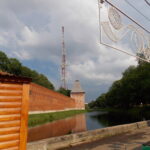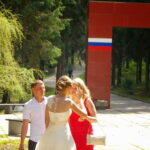Smolensk: A Mosaic of Memorials

Before boarding the midnight train to Smolensk, I ran back through the crowded streets by Moscow’s Belorusskaya train station, weaving between people selling SIM cards, glow sticks, and kittens. We–my friend Lubomira and I–had forgotten our bag of food at home, so I had asked a policeman for directions to the nearest grocery store. That may seem like a small thing, but in the Russia of my previous stays, one did not ask the police for anything. Marveling at what had changed in a few years, I darted into the produkti, gathering the necessities for the journey: water bottles, apples, cheese, chocolate, and tissue packets. Finally back on the train with Lubomira, we talked about what Smolensk might be like–and how they might treat us, especially with increasing tensions over Russia’s annexation of the Crimea–as we watched Moscow disappear.
Smolensk, one of Russia’s oldest cities, beautifully combines the old Rus’, the Imperial, the Soviet, and the beginnings of a post-Soviet. Residents seek to preserve the built environment but are hindered by a scarcity of resources.The city is accessible from Moscow by train, bus, and car, but not by commercial airlines. Smolensk bears the scars of multiple invasions throughout the centuries, suffering under the armies of both Napoleon and Hitler. Just outside of the city lies the Katyn forest, where the Soviets massacred thousands of Polish officers and buried them in mass graves.
Although I had researched the city in Moscow’s archives, it is one thing to read documents and another to walk among the places described in them, to see how the buildings simultaneously shaped and were shaped by the people. This trip, I hoped, would acquaint me with the city and its residents, but Lubomira and I remained unsure how they would view us: me, an American graduate student, and she, a Bulgarian raised in Prague and working on her doctorate in Paris. Mostly, the people we spoke with were curious: why would we chose to come there? What did we see in their city?
Most often, we were struck by juxtapositions. We wandered down narrow streets lined with buildings from the Imperial period. These had been repainted throughout the centuries in happy shades of yellows and teals, but still bore the scars of bullets and mortar. Larger Soviet roads framed Khrushchev-era apartment buildings in varying stages of disrepair and the occasional McDonald’s. The peculiar beauty of the landscape was marred by infrequent trash collections; recycling is next to impossible in Russia, even in the capital. Though many had told us we must visit Katyn, getting there proved difficult. Residents seemed unsure how to incorporate the horror of what had happened there, and what it meant for them today. Katyn was beautiful, confusing, and poignant, like much of Smolensk: a mosaic of memorials, layering the past and the present as people sought to both remember and build anew.


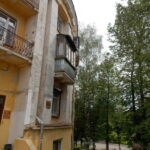
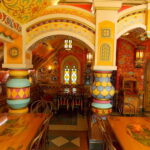

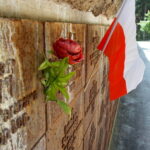
Kathleen Conti, a graduate student in UW-Madison’s history department, focuses her research on how people in the Soviet Union constructed identities and histories, both personal and national, through their environment. Her dissertation explores reconstruction and historic preservation in Russia and Kazakhstan after World War II. A photographer and advocate, Kathleen’s work has been featured by the World Health Organization and on Capitol Hill. Contact
